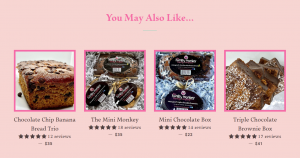Everyone enjoys homemade cakes, but sometimes it can be challenging to make one that is delicious and fluffy. This blog reveals the essential baking techniques.
Many of us are familiar with the disappointment of spending time measuring, combining, and baking only to have a cake not rise in the middle or stick to the pan and crumble. Fortunately, you may use the following baking advice to bake light, fluffy, and tasty cakes consistently. We’re providing the best techniques, whether you want to bake from scratch or are looking for beginner’s advice. For more information, keep reading.
If you are looking for a perfect gift for your loved ones, consider survival gifts. They also make one of the best handmade sweets. Visit their website to know more details about their products. 
11 Baking Tips
Keep these easy tips in mind the next time you’re preparing a cake:
- Prep the ingredients
Unless otherwise specified in the recipe, have all ingredients at room temperature. When using eggs, they should only be kept out for roughly 30 minutes. Components are easier to blend, and the cake has more volume. - Choose the suitable flour.
Use 1 cup less than two tablespoons of all-purpose flour for every cup of cake flour if you don’t have any on hand. Cake flour is required in some recipes because it produces a little softer cake, but all-purpose flour also works well in making cakes. - Prepare the pans
Prepare your cake pans by greasing, flouring, or lining them before pouring the batter in to avoid sticking or breaking. - Mix and match the dry and wet ingredients
Instead of pouring in all your flour and milk, alternately add the two. Just be careful to start with flour since gluten formation begins when liquid is added to flour. A cake with too much gluten will be stiff, so create and end with flour and add a small amount of one ingredient before adding the other. - Preheat
Preheating your oven is a must before baking to ensure effective cake rising. - Let air bubble out
The cake pan should be tapped on a tabletop after adding the batter to expel any noticeable air bubbles. (This is crucial for pound cakes in particular!) - Check for doneness
The top of a layer cake will typically be domed, it will start to peel away from the sides of the pan, and it will spring back when lightly touched. Insert a toothpick near the center of the cake to ensure it is done. It needs to be devoid of any wet batter. - Let it cool down
Ten minutes should be given for the cake to cool in the pan on a rack. Once completely cool, remove the cake from the pan. Before frosting your cake, make sure it is absolutely cool because else, your frosting may melt. - Freeze
An unfrosted cake can be frozen by setting it on a baking sheet and putting it in the freezer until it becomes problematic. Afterward, put the cake in an airtight container or a plastic freezer bag, seal it, and put it back in the freezer. - Clean up quick
Clean up quickly. Place your cake on a cake pan or pedestal and tuck small pieces of wax paper under and around the top layer before icing. To ensure a cake pan is without smudges, carefully pull the waxed paper out after you’re done. - Store
The cake that has frosting or filling with whipped cream, cream cheese, sour cream, or raw eggs needs to be refrigerated if there are any leftovers.
Read Also:


























































